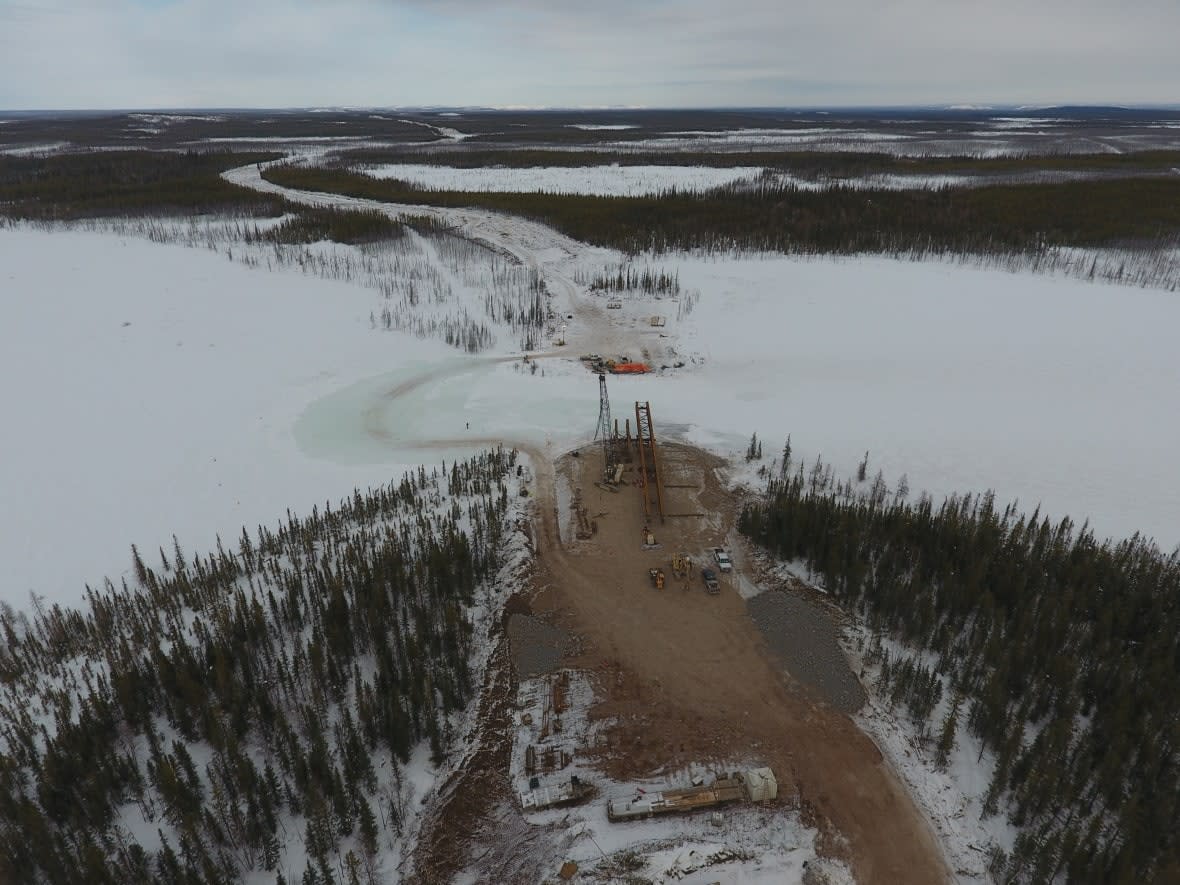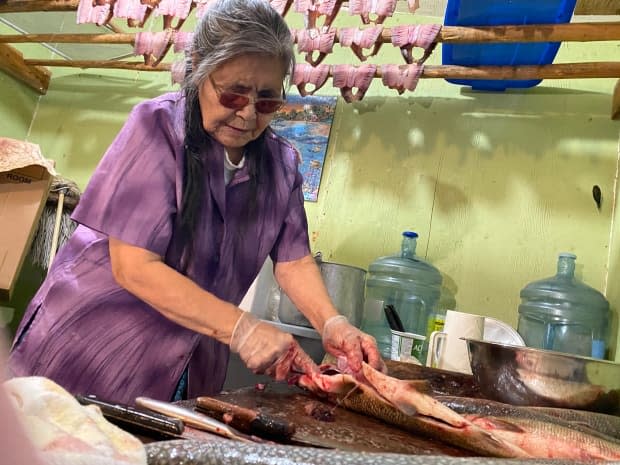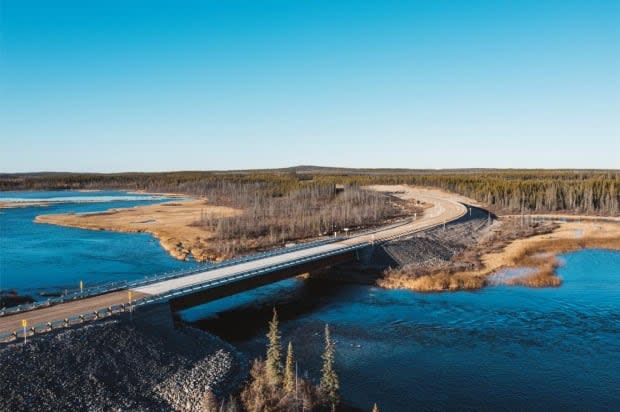'The opportunities are endless': Tłı̨chǫ Highway opens, marking a new chapter for Whatì, N.W.T.

The Chief of Whatì, Northwest Territories, will soon do something he's never been able to do until today — get in a car and drive to Yellowknife on a road that's open year-round.
"As soon as they remove that barricade, I'll be on the Whatì highway," said Alfonz Nitsiza.
As of 10 a.m. Tuesday, that barricade came down, and the largely fly-in community located about 164 kilometres northwest of Yellowknife is a fly-in community no more. A 97-kilometre, two-lane gravel all-season highway is officially open to the public.
The $185-million road known as the Tłı̨chǫ Highway connects to Highway 3 and onto the national highway system, year-round. Previously, Whatì was only accessible by a winter road, which typically opens late January and closes mid-April.

Another $226.8 million will cover the cost to operate and maintain the new road until 2047, a contract held by North Star Infrastructure, which also built the highway.
The road will also connect the Tłı̨chǫ communities of Gamètì and Wekweètì to the south via their winter roads, which will now be able to open earlier and stay open longer.
"People are very excited," Nitsiza said.
He easily lists off the benefits for his community of about 500 people: more access to food; more opportunities for youth to travel for events such as sports tournaments; reduced freight charges for items that previously had to be flown in, such as dishwashers; and a chance for people to connect with loved ones in other parts of the territory without having to board a plane.
Roundtrip airfare for a roughly 40-minute plane ride to Yellowknife from Whatì costs more than $500 per person. Costs can quickly add up for a family. Now, they can make it to the capital in a few hours on a tank of gas.
Conner Nitsiza, 16, plans to head down to the city next week with his parents for some shopping and a haircut.

He's preparing to upgrade to a Class 5 licence, meaning he'll soon be able to make the trip by himself. But, for now, he has to be accompanied by a fully licensed driver.
Nitsiza plans to leave the driving on this trip to his parents.
"I don't know how to drive in [Yellowknife]. Maybe my mom and dad can teach me," he said.
From trading post to tourist destination
The history of Whatì dates back long before it became a trading post in the late 1700s. People were always on the land, Chief Nitsiza said.
After the post was established, families then started to settle, building cabins along the shore. In the summer, some would go back and forth down to Behchokǫ̀, about 80 kilometres away.
Over the decades, a school was built, then an airport, and now, a road.
"We're living in a different time now. The access to communities is very important. It will certainly invite some investors to come up and look for development," Nitsizia said.
A nearby cobalt mining project tops the list. The CEO of Fortune Minerals, which owns the NICO mine project, called the road a "key enabler" for the project last week at a virtual geoscience conference in Yellowknife.
There are downsides. Nitsizia cautions the road opens up the potential for an increase in drugs and alcohol in the community, which along with Gamètì and Wekweètì, prohibits alcohol .
"How do we adapt to what's coming? We got to be ready," he said.

It's something elder Marie Adele Rabesca has been thinking about since talk of the road started. Inside her home overlooking a frozen Lac La Martre, she preps buckets full of trout, white sucker and jackfish her son recently caught to dry.
"It's going to be a big change for us," said the 78-year-old, who spends two days a week teaching culture at the only school in town.
"There will be a lot of people coming in, and also, there's going to be a lot of other worthless stuff coming into our community, which will cause a lot of people worries."
The answer, she says, is talking about it and educating the youth.
Concerns and opportunities
The town's senior administrative officer says similar concerns have been brought up over the years since the road was announced.
"With an open road, you don't know what comes after that," said Lisa Nitsiza.

In response, she said residents have been advised to start locking their doors and taking their boat or skidoo keys with them.
"They didn't used to do that," she said. "Now you're going to have to start locking up."
But, people are starting to see the positive impacts — such as more job training and tourism opportunities, like developing the nearby Whati Falls.
"The opportunities are endless," Lisa Nitsiza said.
She's looking forward to seeing family and friends more often, but rather would take the drive to visit them.
"Stay tuned. See what we can do from here on."


